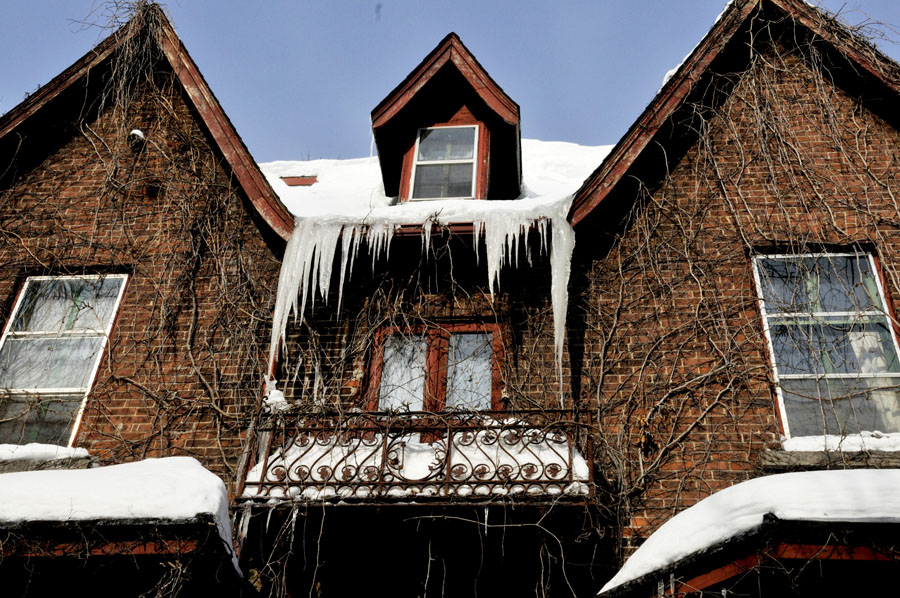
(Icicles hang off the roof of 40 Crawford Street in this February file photo.)
If one could produce energy from the hate being flung at Jim Rawlings on the Internet, it would solve Ontario's Hydro cost crisis by throwing plenty of free juice onto the grid.
For those of you not quite so inclined to get worked up about Brockville's latest heritage battle, Rawlings is the newly-minted Heritage Brockville member who filed a last-minute appeal to a city council decision in February that would have divested a home at 40 Crawford Street of its heritage status.
The hate got to the point where we had to scrub one comment that essentially called Rawlings out to the back of the schoolyard to be taught some manners.
As always, it did not take long for the commenters to abandon the topic at hand and have at each other. Among the wittier rejoinders: “Did someone raise the horses tail and let you out?”
(Yes, the apostrophe was not included...)
All of this made me hesitate to add my own more measured criticism to the mix. In journalism, however, hesitation should play only one role: that of allowing a journalist to think more deeply on the topic.
And so, upon some reflection, here are the two reasons I believe Mr. Rawlings's appeal to be misguided: Proportionality and process.
On that first P, let's consider another heritage case. When Rolf Baumann announced last year that the former Trinity Anglican Church was facing the wrecking ball, a community campaign ensued. People tried to find ways to save the building.
They failed, to be sure, because sometimes financial reality is harsh, but they did try, because Trinity is a visible heritage building that carries within its frame many local residents' memories of Sundays past. It is also a piece of religious history in a community that likely has more churchgoers, per capita, than the average.
Still, one can argue that when Trinity does fall, the blow will be sad and painful but hardly severely damaging to the heritage identity that is part of Brockville's tourism “brand.”
Losing the former Fairview at 40 Crawford, by contrast, would be even less damaging, since it stands at a bit of a remove from its street, and that street is itself at a remove from the heritage district.
What's more, nobody is even talking about demolishing the Fairview.
What we have is a hardship case, as presented by the home's owners, and a city council that decided removing the heritage status would bring relief from that hardship without causing any harm to Brockville's identity.
The second reason this appeal is ill-advised is process, and the circularity thereof.
Under the Conservation Review Board process to which this appeal is now subject, the final decision reverts to the original approval authority.
In other words, the same city council that made the initial decision in February will be called upon either to confirm that decision, or reverse it because of some new information.
Which prompts the question: Why didn't Mr. Rawlings just bring his information – or make his point – to city council back in February, before councillors made their decision?
His answer, in an interview earlier this week, was that he was out of town when this debate hit the headlines.
It makes one wish Brockville debates on 19th and 20th century buildings might include a 21st century feature called Skype.
It would have saved us from a lot of unnecessarily long and wholly disproportional bickering.